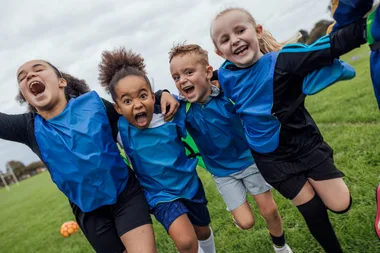So… What are your kids looking at online?
It’s the reoccurring fear running through every mother’s mind – what is my child doing online?
Almost every teenager holds a phone, and multiple social media accounts these days, communicating with friends in so many different ways.
But these communication lines are where bullying can often run rife.
In a bid to raise awareness around cyberbullying, kids read mean tweets, Jimmy Kimmel style.
The video was created by the Canadian Safe School Network to shed light on the effect of a rude tweet, and how quickly funny can snowball into harmful.
As parents, you may wonder what your kids are looking at online. And most importantly, are they safe?
So whether they are young, old, a boy or girl, here is what your child is likely to be looking at online.
There were 30,000 new education apps made in the last three years. That’s 200 apps created every week. And 60 per cent of those were targeted at pre-schoolers. This tells you how young Aussie kids are learning. It’s where they’re spending their time – online.
“Youtube is the site kids are logging onto,” says Dr Orlando, a senior lecturer at the University of Western Sydney whose research focuses on the ways children are using technology in the home and at school.
“Recent research revealed that children between nine to 14-years-old are watching Youtube almost as much as they are watching TV.”
But they’re not watching music videos or streaming TV on the video-hosting site, but more likely viewing footage of people playing popular games like Minecraft.
A Youtube channel called “Stampylonghead” has over five million subscribers, and all the character – “Stampy” – does is upload a video each week of himself and a friend playing Minecraft. And kids watch.
So if you have a son under 12-years-old, it’s likely he’s watching this Youtube channel or playing Minecraft himself, says Dr. Orlando.
Minecraft is a game based around blocks which the user breaks and places strategically to protect themselves against ‘nocturnal monsters’.
And the older boys? They like to play the sci-fi, war-themed games which are often set in fantasy-like worlds, says Dr. Orlando, who claims League of Legends is a popular app among this demographic.
It’s free to download, but the app users can buy things to help them succeed in the game, so watch out if your credit card is linked to the Apple ID on your son’s phone.
Young girls are leaning towards more creative sites online, with Dr. Orlando meeting many 11 and 12-year-old girls who have created their own blogs (however, many of their parents won’t let these girls publicly list their sites).
And while the average age a child is gets their first phone is about 10-years-old, children under five are still using their parents’.
“A phone is almost like a perfect toy for a child,” say Dr. Orlando.
Toca Hair Salon is one of these toy-like apps girls under five-years-old are using.
Based in a hair salon, the app allows the user to cut and colour the hair of customers in the app.
And while these apps and games are hugely popular, social media remains ever-dominant, especially with teenage girls.
It’s important therefore to educate our children about the internet. Because there are some dark places.
Here’s our 7 tips for keeping kids safe online:
1. Don’t give them their own devices too early.
Make them use laptops or computers in the family room or kitchen where you can monitor them and talk to them about what they are doing.
2. Use porn blockers.
Have conversations about how things you see on the internet do not reflect reality. There’s also a wifi blocker that cuts off the internet after a certain time. Set this for their bedtime so they can’t stay up all night exhausted from staring at their screens throughout the night.
3. Show them how viral the internet can be
Make like these teachers who uploaded images of themselves on social media to show pictures can travel around the world.
Their letters were shared by thousands across the globe and even appeared on US TV.

4. Become Facebook friends with them.
Set up clear parameters before you let them sign up to social media sites. Again, reiterate that anything on the Internet is forever.
5. Explain the dangers.
Talk about how other children and teenagers have suffered from constant cyber bullying. Tell them bullying on the internet is just as painful as in real life and that they should come to you if someone is making them uncomfortable. And add that they should advocate if they see friends in distress.
6. Keep up with the trends.
The latest trends are always changing, so try to stay on top of this by downloading similar apps and seeing how they work. Snapchat, KIK, Instagram are where the kids are right now. Take photos with them, interact with them on these devices as their friends do. Show them mum and dad aren’t clueless about these apps, and get cautious if they’re overly weary about showing you what they’re doing in these spaces.
7. Understand your child is not an exception.
The internet can be a scary place. What you have blocked at home is probably being viewed by them on their friends. It’s better to talk to them about taking everything with a grain of salt. And educate them early. It’s scary but necessary to be aware and have them be comfortable talking to you about what is going on.










.png?resize=380%2C285)
